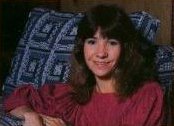 King's
Quest: Quest for the Crown and King's Quest II: Romancing the Throne
were two great adventure games and they sold very well. The natural thing
to do was to make another sequel. Roberta always wanted more and more complex
plot elements in her games, but memory limitations always limited her creativity.
But as computers were getting better and better, she decided that the next
King's Quest game would push the limits and be much bigger and more complex
than any of her previous games. The first two games were very similar in
many ways. The third game had to go further and bring new characters and
story elements into the King's Quest series.
King's
Quest: Quest for the Crown and King's Quest II: Romancing the Throne
were two great adventure games and they sold very well. The natural thing
to do was to make another sequel. Roberta always wanted more and more complex
plot elements in her games, but memory limitations always limited her creativity.
But as computers were getting better and better, she decided that the next
King's Quest game would push the limits and be much bigger and more complex
than any of her previous games. The first two games were very similar in
many ways. The third game had to go further and bring new characters and
story elements into the King's Quest series.
Roberta got together with a team consisting mainly of the same people that worked with her on the previous two games, but more people were involved in the production this time. Al Lowe, who made the music in King's Quest II, became the lead programmer of King's Quest III, while his wife Margaret made the music instead.
The AGI system had to be expanded a little to handle the game. Two elements not seen before; a clock displayed on the top of the screen and an automapping system were put into the game. The use of these features were important elements in the gameplay.
The plot of the game was very different from the plot in the previous ones. First of all, the main protagonist wasn't King Graham this time, but a 17 year old slave boy named Gwydion. Second, the game didn't start in Daventry. And third, the goal of the game wasn't obvious this time. All the player would know at the beginning of the game was that you were a slave of the evil wizard Manannan living in the land of Llewdor, and if you didn't come up with a way to escape from him you would soon be dead. What would happen if you actually managed to escape was unclear. The game manual came with the recipes for seven magical spells that could be useful to help you along, but you had to find the ingredients first. And if Manannan caught you stealing his stuff or practicing magic in his house you were in trouble for sure.
When the game was released in October 1986, it was the second biggest game ever released by Sierra On-Line. It could still not beat Roberta's old Apple II game Time Zone, but it was nearly as big as the two previous King's Quest games put together.
Right after the release, Sierra On-Line
was bombarded with letters and telephone calls from King's Quest fans who
complained that this game was not a true King's Quest game at all since
it didn't have anything to do with King Graham, Queen Valanice or Daventry.
At the time there were still no hint books available from Sierra On-Line,
so it took a few months before people managed to finish the game and realized
that it was indeed a true King's Quest game after all. The game was really
hard and complex, but the most seasoned adventure game players still complained
about the "automagic mapping" system (witch had been promoted a lot in
the advertising for the game), claiming that it reduced the challenge of
the game. But the game was still heralded by most people became a bestseller.
The automapping system was later included in Roberta's 1987 game
Mixed-Up
Mother Goose, where it was much more appreciated.